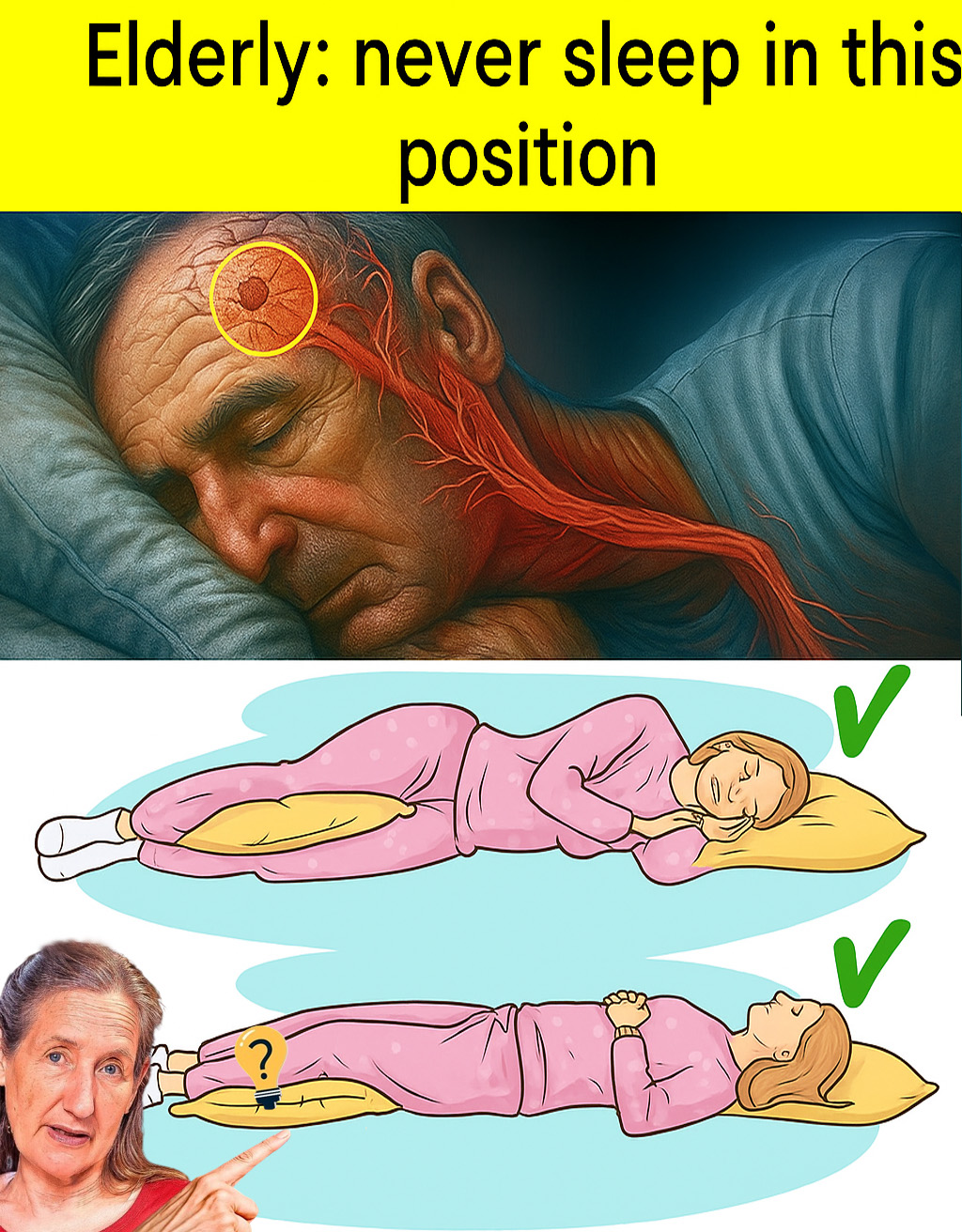You’re settling into bed after a full day, chasing that elusive deep sleep. But as you drift off on your back, gravity subtly shifts your tongue, narrowing airways and spiking blood pressure—silent signals that could tip the scales toward a stroke. For seniors over 65, where stroke risk climbs 50% per decade, your nightly pose isn’t just comfort—it’s a guardian of brain health. Sleep apnea, a hidden thief in 70% of stroke survivors, worsens in certain positions, fueling oxygen dips and inflammation that harden arteries. Rate your sleep quality 1-10. Below 7? This isn’t fate—it’s fixable. Uncover how side sleeping slashes apnea severity 30% while back sleeping invites peril. Your nights hold power. Let’s rewrite them for a sharper tomorrow.
🧠 The Nightly Link: How Sleep Position Fuels or Fights Stroke
Seniors face a perfect storm: Aging narrows arteries, hypertension surges (affecting 70%), and sleep fragments into 6-hour scraps. Enter positional sleep apnea—breathing pauses that jack up stroke odds 2-4x by starving the brain of oxygen and stressing the heart. Back sleeping? It collapses airways 50% more, per polysomnography in stroke patients where 73% logged zero non-supine time. Side sleeping flips it: Glymphatic flow clears brain toxins 2x faster, dialing down dementia risk 25%—a stroke cousin. Pause: Feel your neck cramp? That’s misalignment whispering warnings. Science screams prevention—side sleepers cut cardiovascular events 20%. Shocked? The risks ahead will floor you.
🚫 Risky Position #1: Back Sleeping (Supine) – The Apnea Amplifier
Drifting flat on your back feels neutral—until it isn’t. Gravity pools the tongue backward, slashing airway space 40% and spiking apnea episodes. In ischemic stroke survivors, 100% median sleep time supine correlated with AHI (apnea index) over 5—73% had moderate-severe apnea. Result? Overnight BP surges 20 mmHg, hardening plaque and inviting clots. For seniors, this doubles hemorrhagic stroke odds via unchecked pressure.
Why It Hits Seniors Hard: Frail muscles can’t fight gravity; 80% of elderly apnea worsens supine. Wake foggy? That’s hypoxia’s hangover—stroke’s prelude.
Quick Fix: Tennis ball sewn into a back-pocket T-shirt—roll off in seconds.
🤰 Risky Position #2: Stomach Sleeping (Prone) – The Neck Nemesis
Only 7% swear by belly-down bliss, but it twists necks 45 degrees, straining carotids—arteries feeding your brain. Reduced airflow mimics apnea, hiking stroke risk 15% via chronic misalignment. Seniors? Osteoporosis amplifies spinal crush, pooling blood in legs for clot formation.
Ver continuación en la página siguiente
